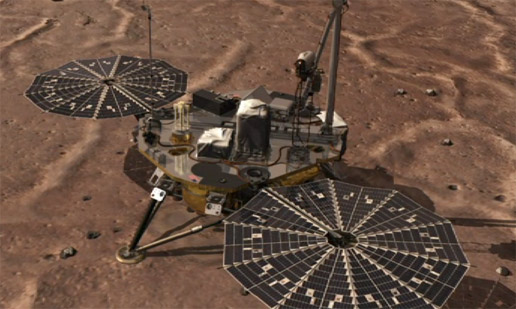Due to decreasing sunlight and worsening weather conditions, the Mars Phoenix Lander has finally ceased communications. Given that the lander started to cycle into safe mode only a little while ago, where it put itself into a mode that turned most of itself off in order to conserve power except to send regular signals, it’s not too surprising that it has ceased communications. In fact, it’s incredibly impressive that the little lander has lasted far longer than its original 90-day mission.

Having landed on Mars in May, when the Mars Reconnaissance Orbiter managed to see it during its descent, the Mars Phoenix Lander surprised everyone when it managed to glimpse a patch of ice that was probably uncovered during its landing. And it didn’t take long for it to take microscopic images of Martian dust. And despite its first attempt at scooping up Martian soil for analysis having run into problems when the dirt got stuck on the instrument screen door, it eventually managed to shake it in.
Another surprise was unearthed when the lander dug up the Dodo-Goldilocks trench, where the lander managed to expose water ice buried under the soil. And the water ice evaporated right before its cameras. And it poked a fork into the Martian soil during its first all-nighter.
Unfortunately, the lander’s second attempt to scoop in soil for analysis was thwarted yet again when it wouldn’t even fall down from its robotic scoop. At least the soil eventually managed its way into the instruments before all of the water evaporated away, and in the meantime we got to see a laser light show on Mars thanks to the lidar on the lander’s weather station. Fortunately, later attempts to scoop in soil worked better, with six out of eight of the TEGA ovens having been used in the end. The Mars Phoenix Lander also carried an atomic force microscope, so it got to take a look at Martian dust at truly microscopic scales.
The lander also showed us sights similar to what we can see on our own planet, as it saw frost on the ground and on itself, not to mention clouds in the sky. Altogether, the Mars Phoenix Lander has been fruitful in my humble opinion. And in terms of scientific results, the best has yet to come as us humans back on Earth have only started analyzing the wealth of data the lander sent back. Although I have yet to hear what went on with the supposedly missing water that should have been in the Martian ground.